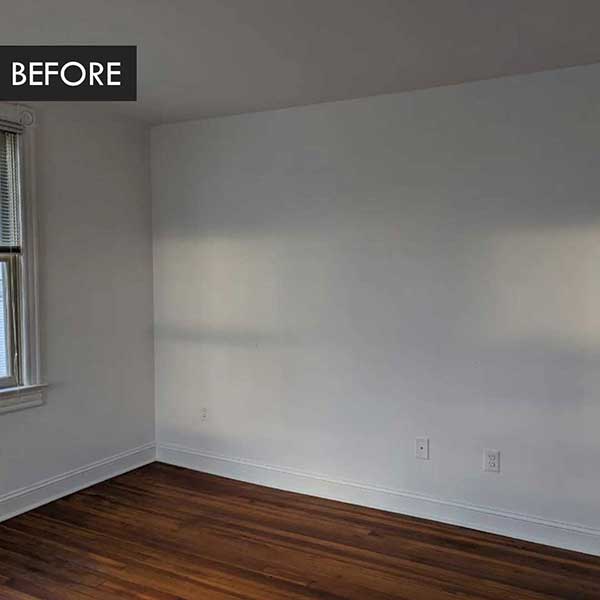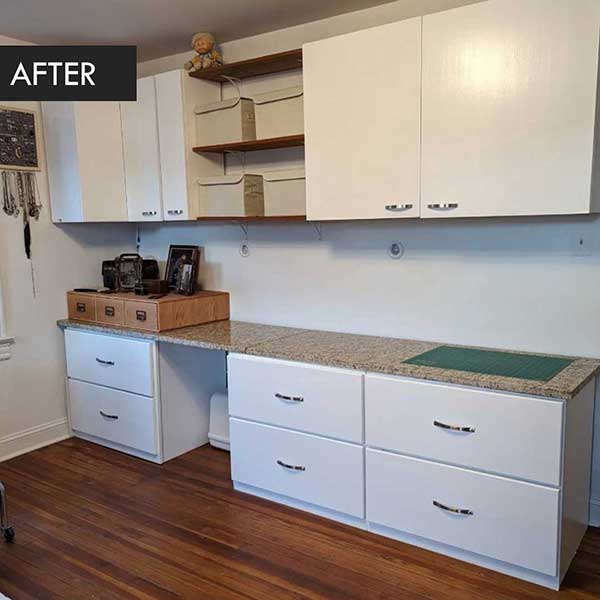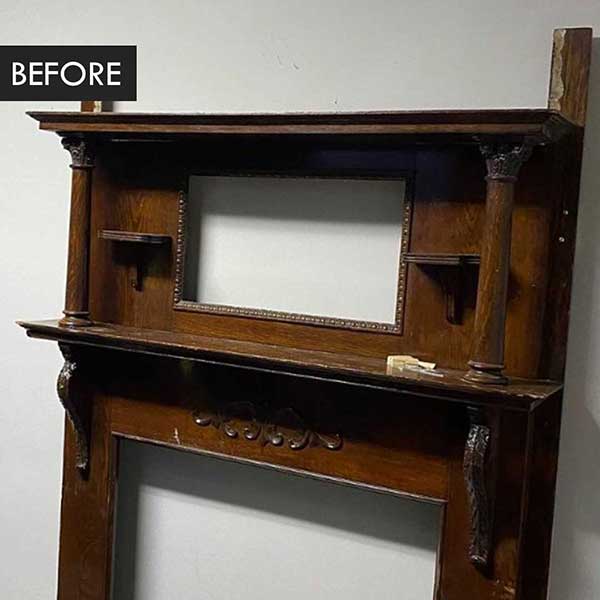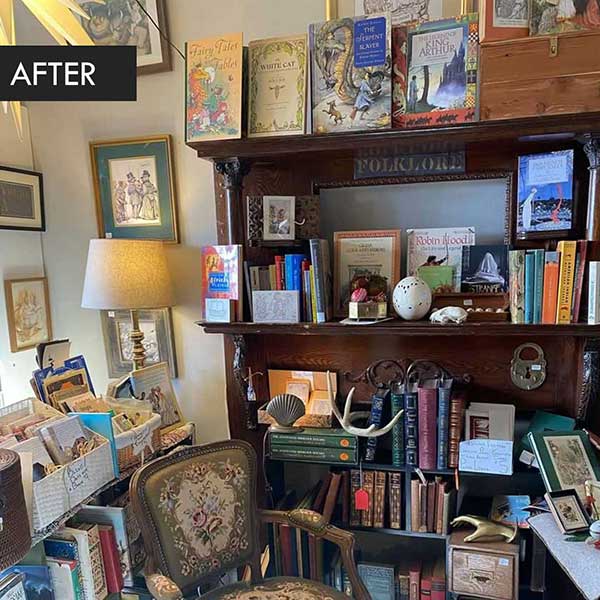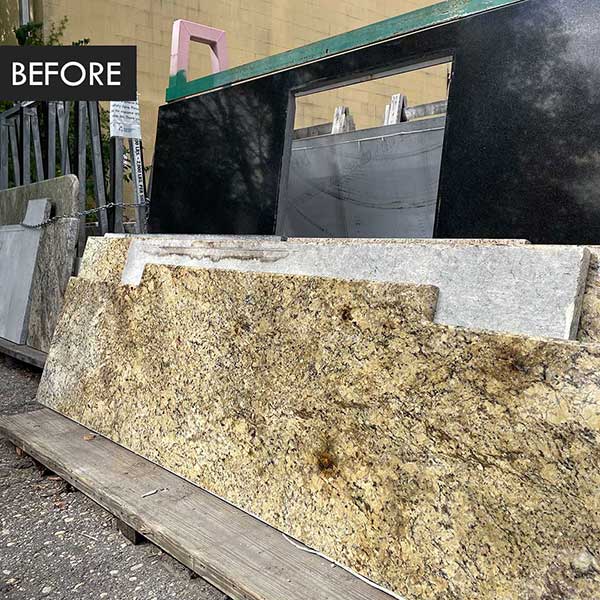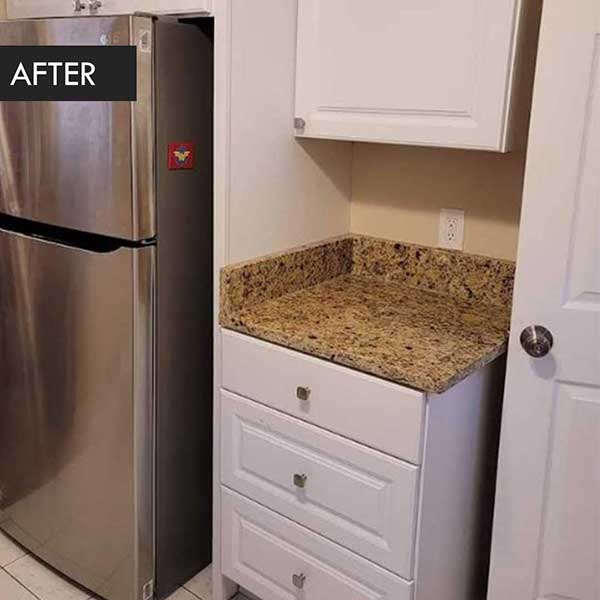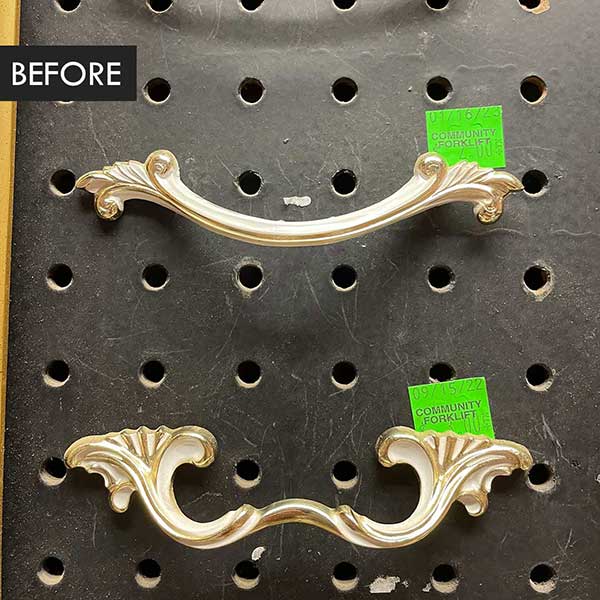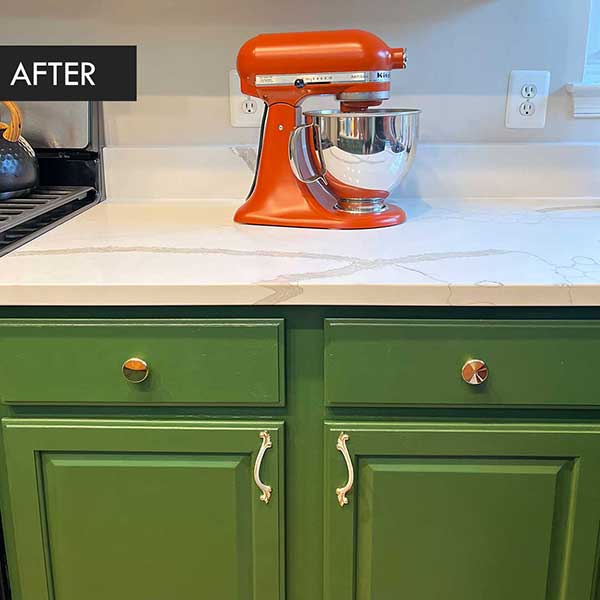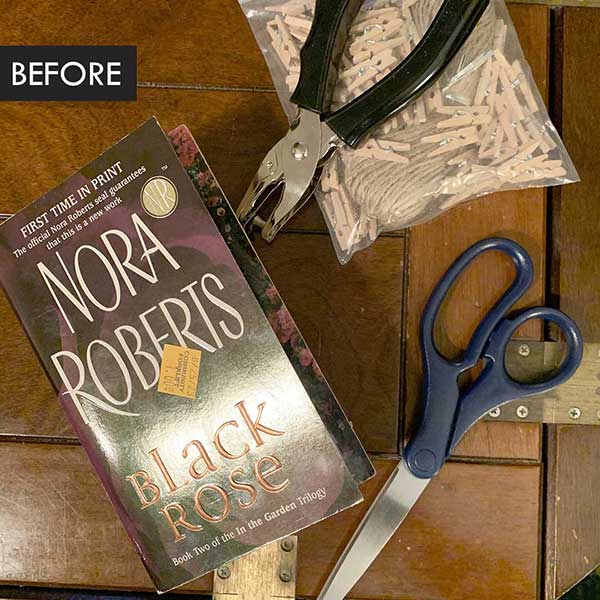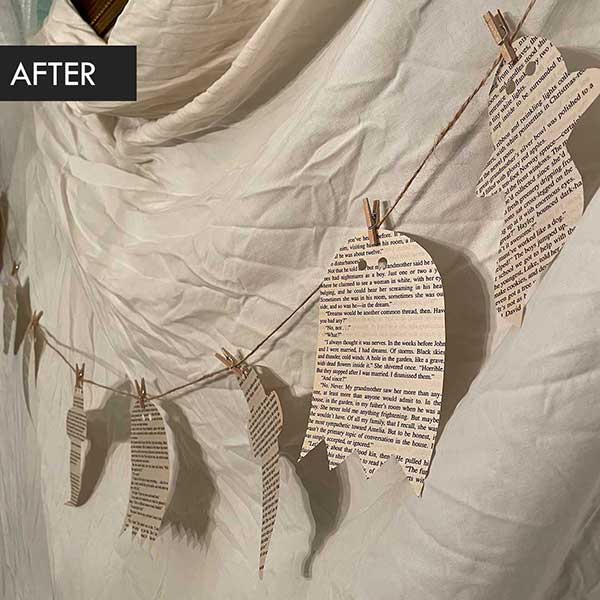This sewing room storage area is sew creative! (Sorry, couldn’t resist.) Former office cabinetry was upcycled for the fabric stash drawers on the bottom. Those cabinets plus the salvaged granite countertops and upper cabinets above are all from Community Forklift’s reuse warehouse. Photos by @thebottomspreservation (Instagram)
Takoma Park’s HouseMouse Books & Vintage is so incredibly cozy! The used books and vintage objects are a big reason for the vibe, and an antique fireplace mantel, chair, and star-shaped chandelier from Community Forklift’s reuse warehouse create the perfect backdrop. Thanks for creating this comfy corner with salvaged materials! Photos by @housemousebooksvintage (Instagram)
This coffee bar was created using granite from our reuse warehouse! From a Forklift Fan: “Purchased granite for my kitchen and saved over $700 for a piece. It and only cost me $77 for the slab and $100 to get it cut. Boom!” Thanks for using salvaged materials in your project!
These vintage French Provincial style pulls look fabulous in their new kitchen cabinet home! A Forklift Fan changed to look of their kitchen by painting the cabinets a deep green and switching out the pulls with salvaged ones from our reuse warehouse. The contrast between the white and green — with just a little bit of gold — is fantastic!
Happy Halloween! A Forklift Fan used a book from our reuse warehouse to create this great ghostly garland. From secondhand book to first-rate decor! You could also use other secondhand paper materials. Would using a Count Chocula box make a string of cereal killers?
Check out more spooky projects in our Halloween DIY blog!
Every time you donate or shop at Community Forklift, you’re helping us lift up local communities through reuse. We turn the construction waste stream into a resource stream for communities in the DC region – by keeping perfectly good items out of the landfill, preserving historical materials, providing low-cost building supplies, and creating local green jobs.

